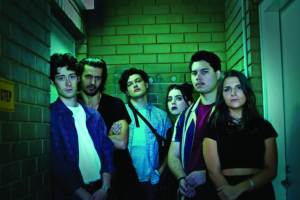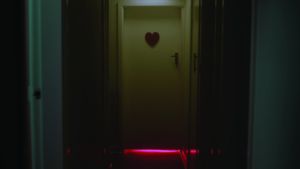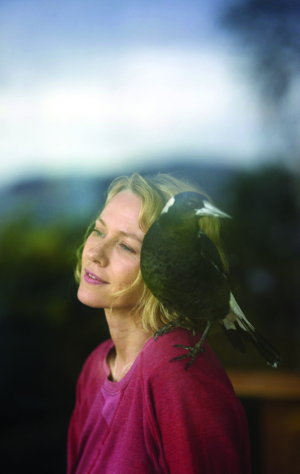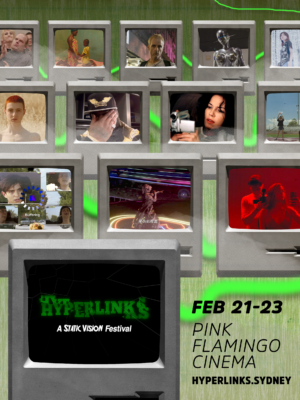Originally censored upon its release, Aussie ‘sexploitation’ drama The Set (Frank Brittain, 1970) – about young, homosexual, aspiring set designer Paul Lawrence, who embarks on a relationship with a bisexual member of Sydney’s upper-class society – is the ‘first Australian feature with homosexuality as a central theme’.[1]Richard Kuipers, ‘Curator’s Notes’, ‘The Set (1969)’, australianscreen, <http://aso.gov.au/titles/features/the-set/notes/>, accessed 29 October 2015. It quickly gained infamy for its taboo-for-the-times, non-judgemental exploration of homosexuality and on-screen nudity featuring popular television star Hazel Phillips.
I speak to Sean Myers (nee McEuan), who played Paul, as well as veteran actor and The Set screenwriter Roger Ward about the film’s notorious source material, their creative struggles with the subsequent film adaptation, and their plans to finally do justice to a story originally penned over forty-five years ago.
Oliver Pfeiffer: Homosexuality was taboo in the 1970s. What was the driving force behind writing the book The Set in the first place?
Roger Ward: I wanted to write something controversial – a novel set apart from the norm. Most books written in Australia during that time depicted the outback: drought, cattle-running, horseriding and bushrangers. It was just not my type of book to write. I also thought a controversial subject matter would help sell it to publishers. I thought, if I wrote something different and if it was published, it might be picked up for a film.
John O’Grady [under the pseudonym Nino Culotta] wrote the raging success They’re a Weird Mob,[2]In 1966, They’re a Weird Mob was adapted into a comedy feature by director Michael Powell. so I knew something different could be done. I studied various American writers as well and was influenced by Harold Robbins – not his writing style, but the fact that he borrowed personas that he knew or had read about and weaved them through his narratives. He also wrote very suggestive sexual descriptions, something I was extremely cautious about with mine, but of course it had to be done so I wrote them as clinical and clean-cut as I could. I was heavily into theatre in my late teens and, through that, met and befriended many homosexual people.
With this, and having heard outlandish stories about gay pillars of society – politicians, psychiatrists, radio announcers, et al. – all living married lives, with a long-suffering wife and kids, I thought it would make a great story. I didn’t want to write a book totally focused on homosexuality, so I decided to lace the narrative with the all-Australian sport of surf lifesaving, theatre, television, international modelling and set design. Toss in a couple of abortions, the narrow-mindedness of the 1950s and 1960s, a frustrated mother, a horny young man, a lesbian affair, a couple of deaths and a suicide, and you’ve got a controversial novel that everyone will want, right? Wrong!
How did publishers view your novel at the time, given its provocative content?
RW: I was thrown out of so many prestigious publishers when I approached with the finished product that I began to doubt my wisdom. ‘How dare you bring such trash into this office!’ was the mildest I received, although one publisher, who was a little more forward-thinking than the others, rang me to say, ‘Mr Ward, I have just spent twenty-four hours reading your novel and I’ll spend another twenty-four reading it again!’ He wanted to publish [it] and we were steering towards it when, for some unknown reason, he folded, went bust and it was all over, red rover!
You began writing the novel while you were an extra on Lewis Milestone’s Mutiny on the Bounty (1962) in Tahiti. I heard that, as a consequence, Marlon Brando had some influence on The Set’s narrative, too.
RW: I never discussed the book with Brando. We never discussed homosexuality, either. Tahiti in those days was a party paradise. Because of my friends – Bengt Danielsson from the Kon-Tiki expedition, Hollywood actor Dewey Martin, the descendants of James Norman Hall (who wrote the Mutiny on the Bounty novel), and producer Aaron Rosenberg – I landed in Brando’s company every night. And I saw him in every guise. I found him to be insecure and problematic – sometimes on the top of the world, at others grovelling on the bottom in self-pity. So, although we never discussed the book, I did write my lead character, Tony Brown, with some of those characterisations; in fact, it has been commented that Rod Mullinar, who plays Tony in the film, gives a ‘Brando-ish performance’.

Family relationships, heterosexuality, nymphomania, an older woman attracted to a younger man – your story covers a broad range of subjects. But, ultimately, it’s homosexuality that provides the main focus for the screenplay and subsequent film. Can you tell me how this came to be?
RW: It is a sore point. I returned to Sydney to see what I could do about flogging the book. As I was an actor, I managed a few bits and pieces in television drama and, through that, met the actor Ed Devereaux, who had just finished [working on] Journey out of Darkness [James Trainor, 1967], produced by the American Frank Brittain. Ed told me Frank was looking for Australian stories. Shortly after I delivered the manuscript, Frank called me to say he was going to buy my book. The reason? His wife, having read it, said, ‘He actually describes two men making love!’
So we drew up contracts and Frank asked me to write a screenplay of 120 pages. I couldn’t do that – I’d spent almost ten years creating these characters and I couldn’t cut their limbs off! Frank grabbed the manuscript, flicked through it, put blue marks on certain pages and said, ‘Make a script out of the marked pages!’ It was every homosexual incident within it. Of course, I had to top-and-tail the incidents with the characteristics you mentioned, but homosexuality was the main theme. Frank loved it, thought it was a ‘beautiful love story’. In fact, that is how he sold the story to financiers.
You were present for some of the production; however, I hear your screenplay was rewritten rather drastically, with the director discarding most of your dialogue. How did you respond to this?
RW: I was extremely unhappy. I hated reducing my sociological, adventurous, dramatic work to a snitchy little homosexual romp! Because that is what I thought it was going to be. It was ten times worse by the time we began filming, and everyone and their dog had a go at writing the script. When I arrived on set, I asked Frank whether I could see the script. He claimed there wasn’t one. The next day, I accosted one of the actors and confiscated his script. I was shattered: the dialogue was rambling and meaningless! The basis of my idea was there but, in a lot of cases, there were added characters – ones not even in the original manuscript – and the dialogue was inane. When the first line was spoken, I yelled, ‘That is not the line!’ [then] fed the correct line and the actor nodded in satisfaction.
‘Having heard outlandish stories about gay pillars of society – politicians, psychiatrists, radio announcers, et al. – all living married lives, with a long-suffering wife and kids, I thought it would make a great story.’
– Roger Ward
Frank glowered in anger – understandable, given I was undermining his authority, but I couldn’t let the work go out like that. It got to the stage where the actors came to me asking not only for the correct line, but also for the motivation and manner in which to deliver it. One would think that, with all this going on, Frank would want me off the set, but he demanded that I appear every day. As it happens, I couldn’t commit, as I was already signed up for acting roles on other productions.
Sean, what attracted you to the role of homosexual designer Paul Lawrence, which, for many actors at the time, would’ve been seen as provocative?
Sean Myers: I was very inexperienced when the opportunity came up, and I was keen to work on a feature film. I saw the script as an interesting essay on manipulation: I saw my character as seeking an identity and using any method to further himself and his career – the classic ‘user’. Although the issues raised might have been seen as contentious, I didn’t have any problem with that. I grew up in London and had only been in Australia for a couple of years, so homosexuality and bisexuality were not a problem for me since there was a more open attitude to that in Europe.
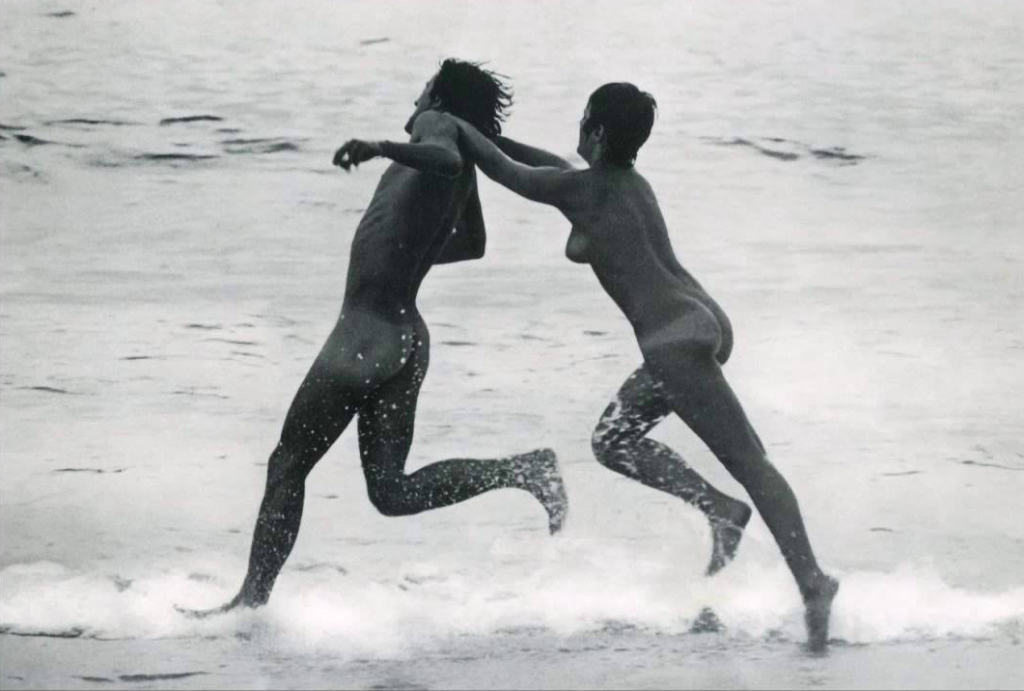
What was Frank Brittain like as a director, and can you describe the atmosphere on the set?
SM: I don’t recall any in-depth discussion of the character with Frank, but, of course, it was discussed to some extent. I enjoyed working with Frank and found him helpful and supportive, up to a point. My memory is that he had a degree of respect for my work, which I found very encouraging. Rod Mullinar was a much more experienced actor than me, and I learned from him. I also found Roger Ward encouraging. I don’t recall much tension on the set, despite the fact that I thought the dialogue was very overwritten and that I was constantly asking Frank for cuts.
The film incited a number of conflicts between anti- and pro-gay demonstrators upon its release. Did you anticipate this response?
RW: I didn’t think anyone would even be aware of the film; I thought it would disappear. But after the massive publicity created on the first day of filming – when Ken Johnson, playing a drag queen, punched Rod Mullinar for demanding he belong to Actors Equity – it just went on and on and on. I also appeared on television and radio to defend it, but at no time during the writing of the novel did I think such controversy would follow and continue for forty-five more years.
What aspects of the film most irked you back then, and have your feelings towards it mellowed over time?
RW: I’m not fond of the film adaption because of the added scenes that I wouldn’t have written. I must say, at first viewing, I nominated the film as cringe-worthy. I hated the dreadful pauses between dialogue, [during which] some of the less experienced actors fluffed or forgot lines, and Frank didn’t bother to go for a second take. But as [the late Australian producer] David Hannay said a few years ago when we contemplated doing a re-edit: ‘That is the beauty of this film. This is what makes it a classic.’ So I live with the faults now and enjoy it far more than [on] my first viewing.
‘To have the young gay community approach me with enormous smiles on their faces is a tonic. They just can’t believe homosexuals were treated in the manner depicted in the film.’
– Roger Ward
The Set has become a cult film and recently screened at Sydney’s Mardi Gras Film Festival. What are your thoughts regarding how it has subsequently been embraced?
RW: I am extremely pleased at the acceptance, and I attend most of the local screenings. To have the young gay community approach me with enormous smiles on their faces is a tonic. They just can’t believe homosexuals were treated in the manner depicted in the film. I also receive emails from people around the world who were enlightened by the fact that others had the same feelings and doubts as they. In some cases, they were unaware others like them existed.
How would you like The Set to be remembered, and could you tell me about your plans for a proposed TV miniseries?
RW: I’m happy for it to be remembered for what it is: a flawed, historical look at the 1960s depicting the lifestyle, the fashion and the manner in which we treated the gay community – although, for a more detailed look, one needs to read the novel, as it is a true document of the 1960s based on diaries depicting life during those years. That is what I want people to have as a memory. Fortunately, the movie is coming out on DVD [via distributor Kobra Films], with the actors, composer [Sven Libaek] and some of the descendants of the actors all giving their take on what went down.
The miniseries is the way I intend to go, as I can depict the entire book. There is enough material in the book to accommodate twenty-six episodes, and I am sure that, once the viewers get a taste of the lives lived by this crowd in The Set, they’d be glued to the box for the entire twenty-six episodes!
Endnotes
| 1 | Richard Kuipers, ‘Curator’s Notes’, ‘The Set (1969)’, australianscreen, <http://aso.gov.au/titles/features/the-set/notes/>, accessed 29 October 2015. |
|---|---|
| 2 | In 1966, They’re a Weird Mob was adapted into a comedy feature by director Michael Powell. |

